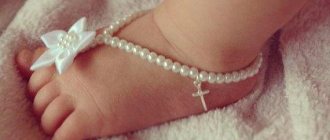The funeral ceremony terrifies mere mortals. Despite the fact that you have to deal with this procedure several times in your life, the topic is still considered difficult. In addition to the great pain of loss, there are several more unpleasant moments that you don’t want to touch. It is preferable to remain silent and not talk about death than to find out about rules and rituals. It is a pity that in a tragic hour people are unprepared. As a result, not only grief falls on them, but also banal organizational issues about which nothing is known. The younger generation does not know how to behave at a funeral. They did not want to hear the advice of their grandmothers, and now they are shifting everything onto the shoulders of the funeral service employees. We can say that the last action is decidedly correct. Professional services will be able to do everything “as expected,” while respecting the individual wishes of relatives and not breaking traditions.
Preparing for the ceremony
The older generation claims that improper behavior at a funeral can affect the soul's presence in another world. It’s not for nothing that there are so many actions in rituals. They have been observed for centuries.
Usually the deceased is buried on the third day of death. Before his final journey, the body is being prepared.
- The corpse is sent to the morgue for embalming, autopsy, and cosmetic procedures.
- The deceased is washed.
- Dressed in a special suit. It should be two sizes larger than the items worn during life. This is the characteristic of a dead body.
- A person is laid in a coffin, which already contains a bedspread and a blanket.
- A funeral litany and funeral service are being held.
All ritual actions are performed in turn. Washing is necessary not only for aesthetic reasons. There is another meaning here. A pure bodily shell reflects an innocent and righteous soul, which more easily ascends to heaven and has a meeting with God.
Clothes are sold in funeral agencies. The choice is really large. It is customary for men to dress in a suit or shirt and trousers. Women will calm down in a dress; wedding decorations are provided for the unmarried and young.
The funeral service is held approximately two hours before the removal of the body. A priest comes to the house, reads prayers and sprinkles the deceased with holy water. The funeral service takes place at the cemetery. The ritual does not require much time. It is enough to read a few songs to send a loved one to another world.
Are there any basic requirements for the clothes and shoes of the deceased?
It all depends on who will do it. Often in the morgue this is done quickly, standardly and without an individual approach. If a specialized company does this, then, naturally, the appearance of the deceased will be the same as they were used to seeing him during his lifetime. In any case, there are a number of items of clothing and footwear that are standardly requested in any of these cases.
You can buy clothes for burial in specialized stores. However, recently preference has been given to clothing that is not often used for burial, but which really completely transforms the appearance of the deceased. Our family and friends deserve to be buried in high-quality and beautiful clothes and shoes.
In any case, you need to prepare in advance:
- Underwear;
- For women - tights or stockings, as well as a headdress;
- For men - T-shirts;
- Shoes are mostly slippers with hard backs (for Orthodox Christians).
If you pay attention to the list of clothing for the dead, you can state the fact that basically this is a description of clothing for those who died at an old age. For young people, children, and also infants, any type of clothing and shoes is selected at the request of their parents or relatives.
Very important:
Please note that no matter what clothes you choose for the deceased, it must be new or in very good condition - clean and ironed. In some cases, the deceased himself asks to be buried in his favorite suit or evening dress.
A relative died: actions
If you've never experienced a fatal tragedy, getting invited to a funeral can be a challenge. We are not even talking about moral aspects here. How to behave?
We understand that in times of grief we need to support those around us, but there are other requirements:
- Place the coffin on chairs or stools, and after use, place them upside down for a day.
- The coffin should not be alone. Usually one of the relatives is always nearby.
- In the room where there is a deceased, all mirrors and surfaces with reflections are covered. This is necessary so that the soul does not fall into the looking glass.
- If you had to wash the deceased yourself, the water is poured out in a deserted place.
- Any items used during bathing and changing clothes are placed in the coffin. This could be a comb, soap, or a towel.
It is customary to dress in black clothing, and women cover their hair with a scarf, headband, and put on a hat. In order to comply with all burial rules, they adhere to the order in which relatives and friends are found. Acquaintances are on the right, and loved ones are on the left, with a coffin in the center. First of all, flowers are brought by the wife, mother, children and brothers of the deceased.
Words that are customary to say at the tomb: examples of phrases
At the time of the funeral, not all people can gather their thoughts and say something to the deceased. But a ritual is a ritual, and therefore you need to somehow say goodbye to another person who has passed into the world. There are no specific words of farewell. The main thing is that the farewell words are sincere and come from the heart of the mourner.
Many people find it easier to compose their farewell speech by looking at ready-made examples:
- “Farewell, dear friend Annushka, I will always remember you.”
- “Eternal rest to your soul, dear Valentina Lvovna. Forgive us all for the sins we have committed.”
- “May your soul find eternal peace. The Kingdom of heaven".
- “I will mourn for you. I’m sorry if I ever offended you in some way.”
Based on phrases like these, you can compose your farewell speech.
Of course, the loss of a loved one is very difficult, but asking forgiveness at his coffin and saying goodbye makes it easier for many.
Appearance requirements
It is unacceptable for a woman to wear a flashy dress with a cutout and colorful colors. It is important to follow the rules and show your grief. Things without deep rollouts and cuts are suitable for this. The ideal color is black, but if there is no such toilet, then it is permissible to wear a suit in a dark blue, brown or gray shade.
Wearing bright makeup is taboo. Imagine for yourself that this is not a suitable place to demonstrate your sexuality and beauty. It is acceptable to apply a little mascara or blush if you don’t want to look completely pale.
Rules for attributes
The invitees buy fresh flowers. You don't have to spend money on a luxurious bouquet. It is important that the number of buds is even. The funeral wreath is purchased with a ribbon. An inscription is placed on it, carrying wishes and indicating from whom the item came. Immediately upon arrival, you must approach the relatives of the deceased and express your condolences.
It would be a good idea to take a few extra handkerchiefs and sedatives. They may be needed by people experiencing acute pain of loss. It is advisable to help the mother or wife if she becomes ill. When saying goodbye, it is forbidden to talk loudly, laugh, or talk on the phone. Leave such actions for another time. To help a family that has lost a loved one a little, it is worth giving feasible financial assistance.
Features and signs of clothing for burial
Among the Orthodox
there are some important signs. For example, you cannot select red clothes or shoes to bury the deceased in. Red is the color of blood and burying the deceased in red clothes will entail the death of his loved one. Often the clothes are prepared in advance by the deceased themselves. Mostly these are elderly people who prefer to take care of it themselves. Make sure that the size of clothing matches the size of the deceased’s figure. It is also advisable to select shoes by size, maybe a size larger.
In Sharia
has its own requirements. You can be buried in ordinary clothes, or in a special shroud, the fabric of which must be identical to that which the deceased was allowed to wear during his lifetime. The deceased is wrapped in a shroud only after ablution and cleansing without the use of water. The size of the kafyan can be different: it all depends on the welfare of the deceased. If there are enough funds, then the shroud is made of three blankets, each of which is wrapped around the body. If there are not enough funds, then one blanket, which can simply cover the body of the deceased, is enough.
In Judaism
There are no special requirements for the clothing of the deceased. The main difference from Sharia is an important feature: the shroud is made from the same fabric for both the poor and the rich. For Jews, what matters is not how much a person earned, but how many good deeds he did during his lifetime.
It is very important to note the correct approach to choosing clothes for Jewish funerals. Thus, the poor will not be ashamed that he could not bury the deceased with dignity - like the rich, and the rich will be deprived of the temptation to make a magnificent funeral process out of the funeral.
Ours offers a large selection of ritual clothing, shoes and accessories for the deceased of various ages, sizes and cut features.
Human life has long been accompanied by many customs and signs. The list of folk superstitions related to funerals is especially long. None of us knows what awaits people after death. Therefore, on the day of farewell to a loved one, relatives try to especially carefully adhere to all traditions associated with death.
How to be at a cemetery
At a funeral, any action is carried out according to established customs. From childhood we remember that we must not cross the path of a funeral procession. By not complying with the requirements, you can bring on a lot of troubles.
If we think about all sorts of harbingers of death, then the older generation knows why they shouldn’t dig too deep a hole and hammer the lid onto the coffin in the yard. According to legend, this threatens the imminent death of another family member.
At the cemetery, it happens that the coffin is carried, and the invitees step in front. You can't do that. Relatives do not have the right to carry the lid. You can enter the churchyard only through the gate; the way home is through the gate.
Be sure to remember that placing metal objects, jewelry, photographs and money near the deceased is prohibited. In this way, the connection with the dead person is not broken, and he will be able to come for the living to take them with him.
When the priest says the last prayers, the ropes that bind the arms and legs are removed from the deceased. They are placed in a coffin and care is taken that no one takes it. Many witchcraft rituals are performed on cemetery paraphernalia.
Funeral etiquette - more than traditions
- “When it hurts, but you don’t know where.
- When it's so empty inside that you're cold.
- Then, perhaps, you have tasted the bitterness of death,
- And the pain of loss deprives you of strength.”
These words belong to an unknown poet, who in four lines was able to approximately convey what millions of mourners feel.
However, it is impossible to fully understand their condition and experiences. mourning etiquette was prescribed in order to behave correctly It presents the basic rules of conduct both at a funeral and after it.
During these difficult moments in life, most are somewhat confused. A hurricane of chaotic thoughts arises in the minds of the mourners, which radically changes their way of life. Seeing how they behave, those who console them are speechless, not knowing what to say.
mourning etiquette was introduced in 1709 for violation of which in those years there was a risk of unpleasant execution. Thus, good manners have become an integral part of society.
An excursion into the history of etiquette
People created it themselves. Daily life, the social environment and the monarchy shaped these rules. The emergence of the nobility and the division of society into ranks made significant adjustments to the ceremonial of the then nobility. The funeral procession was no exception. These rules divided people according to:
- belonging to a particular family line;
- rank;
- rank;
- social status;
- level of financial situation.
In addition to the accepted manner and special form of behavior, this statute also included certain principles that related to appearance, as well as clothing. For example, in all countries of the East, the white color scheme (all its interpretations) is considered to be a mourning color. In contrast, in the European part of the continent, the prerogative is given to the black. Be that as it may, all this contributed:
- association of society;
- cultural enrichment of the nation;
- development of progress.
Over 6,000 years, the rules have been improved and modernized. What does this body of oral tradition look like today?
Wake
Lunch is served modestly. Even if you can afford more and more expensive, this is not the place for display. Light, lean dishes should be served. When setting the table, take into account the use of a plain tablecloth and simple tableware. Spoons and knives are not served.
It is customary to serve: kutya, borscht, mashed potatoes, meat and fish, pies, pancakes, salad, compote. Often alcohol is present, but this is not the main canon.
What is better not to do at a funeral?
A person remembers prohibitions faster than permitted points or rules. I would like to reflect here a little on taboos that are better to memorize. It is advisable for pregnant women not to appear at the mournful event. This is not only harmful, but also carries its own symbolism. New lives in the womb are too susceptible to negativity. They cannot yet protect themselves on their own, so they can catch bad energy. It is better to stay at home and not attend the funeral of a pregnant girl.
It is forbidden to look in mirrors or windows while the deceased is being removed. Even if it is very difficult to look at personal belongings, you cannot throw them away and give them to someone before the forty days have expired. A churchyard is a person’s new home, so you can’t take anything from there. Flowers, wreaths, food remain there. Handkerchiefs used by guests are thrown into the burial pit. In addition, in order to keep track of items that cannot be taken with you, you also need to remember your personal belongings. While the coffin is still in the apartment, you cannot sweep away the garbage or wash the floors. This procedure is carried out immediately after the body is removed, but not by relatives. Drinking alcohol in a cemetery is also a sin.
While the dead person is in the room, it is better to remove animals from there. Cats and dogs are very sensitive to otherworldly creatures and will behave inappropriately.
The main feature at a funeral is humility, sorrow and silence. Try to share the sadness and help in any way. If no one needs your services, then just communicate with the guests, remember the departed only in a good way. Remembering the rules of behavior at a funeral is easy. If you turn to a funeral agency for help, the staff will be able to prepare the event perfectly, and will notify those present about behavioral measures. There will be no nuances or shortcomings here. The work of professionals always remains at its best.
Is it necessary to hang mirrors in the house after the death of a person?
Why do mirrors close after a person's death? This is done in order to protect relatives from the machinations of ill-wishers. An enemy may enter the house disguised as a friend. He will cause damage using a mirror.
The evil eye will affect not only the well-being of loved ones, but also financial well-being. Household members will go bankrupt if they leave the mirrors open.
A lot of signs have been invented about funerals. It is important to follow them, otherwise you can anger the deceased. By observing ancient covenants, relatives will save themselves from many problems.
Now you know what not to do at a funeral. Still have questions? Leave your phone number and we will contact you via WhatsApp.










